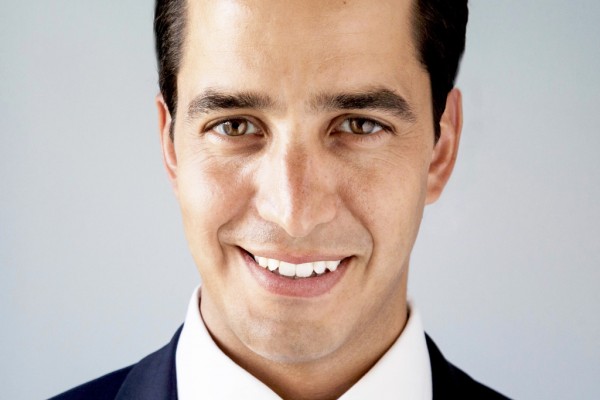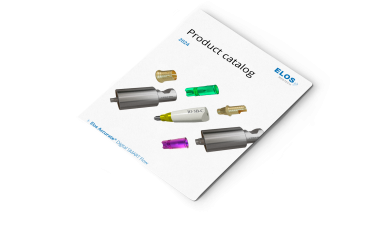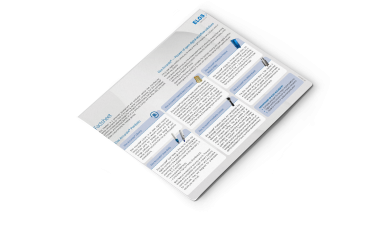With over fifteen years of experience in the dental field, Alejandro Birnbaum is committed to digital dentistry and providing his patients with a beautiful smile. Deciding to go digital a few years ago, he is now experiencing the benefits of an open digital workflow using the latest technologies for diagnostic and treatment purposes. This blog post gives you an insight into the digital workflow from his perspective.
Hi, Alejandro! Please, introduce yourself to our readers?
I have been in the dental field for more than fifteen years. My expertise areas are periodontal and implant surgery as well as prosthodontics. After graduating with a degree in dental surgery in Spain, I spent three years at New York University following the Advanced Prosthodontic Program as well as the Advanced Periodontology and Implant program. I then returned to Spain to achieve my Master Dental Technician degree. Today, I work in my private dental office in Spain and also perform dental surgery from other dentists’ offices. I tutor at my own office and, when time permits, I give lectures nationally and internationally.
Tell me more about your dental office and the work you carry out?
Our dental office is equipped with the latest technologies for diagnostic and treatment purposes. This allows for an efficient workflow and streamlined communication between our dental office and the lab technicians. When patients arrive at our office, we perform full diagnostic x-rays, take photos and digital impressions, and use Smile Design to create design proposals and restorative treatment plans for teeth based on the patients’ desired smile. It can be shown to the patients directly, helping them visualize and understand the treatment options. Our digital workflow also includes CAD/CAM software, lab scans, and 3D-printers. We also use lab scanners and 3D-printers as part of our digital workflow.

Why did you decide to go digital and what are the advantages?
We decided to go digital a few years ago. The main goal was to improve patient experience and reduce treatment time. In terms of advantages of digital dentistry, there are many. For example, accuracy has improved greatly using digital equipment such as intraoral scanners and digital software. Overall, it has contributed to exceeding our patients’ expectations.
You work with Elos Accurate dental components. What is your experience?
The Elos Accurate components are very useful and have helped us achieve our goals. Together with our lab technicians, we can offer high-precision products to our patients. We have used the Elos Accurate IO Scanbodies and the corresponding Elos Accurate Libraries with a great outcome – they enable very predictable results. Elos Medtech was one of the quickest companies to adapt to digital dentistry, which is also a major advantage.

Describe your digital workflow using Elos Accurate and Smile Design?
The combination of Elos Accurate and Smile Design is a perfect match. The Elos Accurate Scanbodies allow us to perform straight milled prototypes in full-arch restorations over implants. It is a great tool to determine embrasures, tooth axis, and junction precision as a starting point for pink build up. Elos Accurate IO Scanbodies are very useful to do esthetic compositions with milled prototypes that are carried out quickly in the software. It is the easiest way to use Smile Design for full arched restorations over implants.
What do you feel is the greatest challenge of digital dentistry?
In my opinion, I think the greatest challenge today is the immediacy of the outcome. We always strive for the best results in the shortest time. The digital revolution is pushing the limits right now. It is important not to take shortcuts but trying to understand the digital workflow and embrace it. I also think, as of now, the traditional techniques and the digital techniques complement each other, and it will take some time before we have a fully implemented digital workflow in the dental industry.

How has the dental landscape changed over the past few decades?
I think dentistry the way we know it has changed a lot. Accuracy, predictability and communication between dental professionals and patients have been surpassed widely with the use of digital technology. Old-school lab technicians sometimes claim that their work is more accurate because they feel like they are in control working the traditional way. But nowadays, with lab scans and other digital equipment, it is possible to achieve accuracy on a whole other level.
What are your thoughts on digital dentistry and the future?
The way we perform digital dentistry has shifted from a closed workflow to an open digital workflow. The new possibilities of an open digital workflow will affect day-to-day dentistry in the future. For example, today, dentistry software allows you to work online and you can manipulate the STL file to a great extent. In the future, I think there will be more software applications to not only improve the outcome but also simplify the patients’ interactions with their own treatment plans.

In general, the future will provide new and improved digital techniques and the greatest change for dental professionals will be the new ways of performing dentistry. Many dentists today are early adopters already using the new digital equipment and are very much engaged in digital dentistry and its possibilities. In a way, they are the ones spreading the digital revolution. Digital dentistry is simply the only way forward.
I believe you made some good points here. Thank you so much, Alejandro, for sharing your knowledge and thoughts on digital dentistry.
For more news and updates on Digital Dentistry and our Open Digital Solution pop by our Dental Blog.



